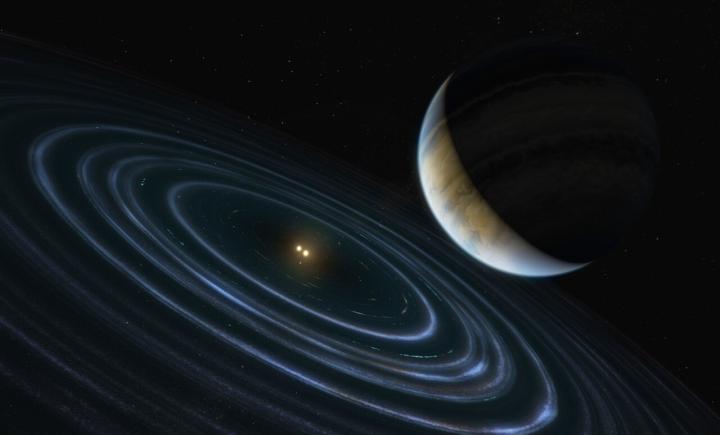Planet 9: Exoplanet that behaves like mysterious world discovered in another solar system

Your support helps us to tell the story
From reproductive rights to climate change to Big Tech, The Independent is on the ground when the story is developing. Whether it's investigating the financials of Elon Musk's pro-Trump PAC or producing our latest documentary, 'The A Word', which shines a light on the American women fighting for reproductive rights, we know how important it is to parse out the facts from the messaging.
At such a critical moment in US history, we need reporters on the ground. Your donation allows us to keep sending journalists to speak to both sides of the story.
The Independent is trusted by Americans across the entire political spectrum. And unlike many other quality news outlets, we choose not to lock Americans out of our reporting and analysis with paywalls. We believe quality journalism should be available to everyone, paid for by those who can afford it.
Your support makes all the difference.Nasa's Hubble Space Telescope has spotted a world that behaves like the long-sought and still mysterious and unproven "Planet Nine".
For years, some researchers have been proposing the there is an undiscovered planet hovering at the edge of our solar system. While no such world has been directly observed, scientists have suggested that it would explain the unusual behaviour of other objects in the distant reaches of our planetary neighbourhood.
Now the Hubble Space Telescope has spotted a planet 336 light years away that could offer clues about Planet Nine. The planet, known as HD106906 b, may have experienced something of the same process that left our own hypothetical Planet Nine lingering at the reaches of our solar system.
It is the first time astronomers have been able to measure the motion of a planet like this: a massive Jupiter-like world that is orbiting a long way from its host stars and the debris disk in its system. While the system has a double star at its centre, the disk looks similar to our own solar system – any Planet Nine would also lie a long way beyond what in our neighbourhood is called the Kuiper belt.
As such, the discovery of the planet is an indication that planets can exist with such unusual orbits and strange characteristics. That would suggest that Planet Nine could have formed in the same way.
"This system draws a potentially unique comparison with our solar system," explained the paper's lead author, Meiji Nguyen of the University of California, Berkeley.
"It's very widely separated from its host stars on an eccentric and highly misaligned orbit, just like the prediction for Planet Nine. This begs the question of how these planets formed and evolved to end up in their current configuration."
The planet was first discovered in 2013, and is the only known planet to have such a wide separation from its host stars. But until now it has not been clear whether it was on a journey out of the solar system, or if it was locked into a very distant orbit.
The new paper, published in the Astronomical Journal, finds that it is likely to be the latter. The planet seems to be bound to the star in an orbit that takes 15,000 years and is highly odd, the scientists report.
Questions about the new world still remain, just as they do about Planet Nine. It is still not clear how either planet would have formed, and how they made their way to the far edges of their solar systems: they may have been created nearer to the middle and then be scattered further, for instance, or formed on the edges.

Join our commenting forum
Join thought-provoking conversations, follow other Independent readers and see their replies
Comments